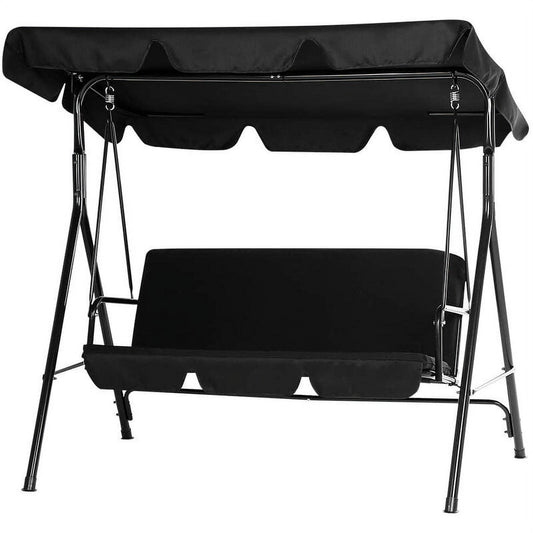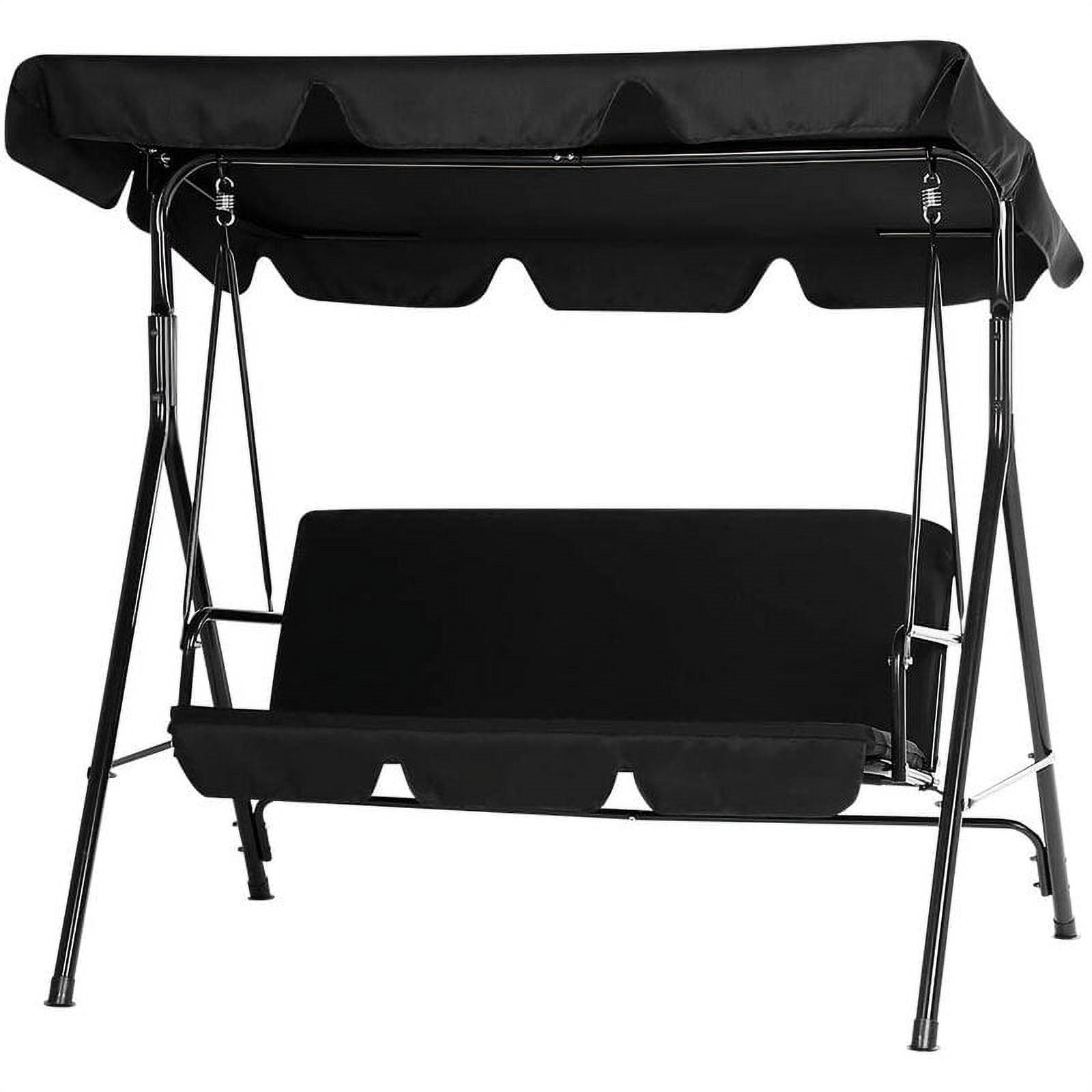An outdoor storage shed is a practical and versatile addition to any backyard, helping to keep tools, bikes, seasonal decorations, and other items organized and protected. However, choosing the right metal outdoor storage shed or plastic outdoor storage shed requires careful consideration of your storage needs, climate, and available space. With so many options available, from small outdoor storage sheds to outdoor bike storage sheds, selecting the right one can feel overwhelming.
To make the best decision, you need to assess what you plan to store, how much space you require, and which shed material fits your climate and budget. This guide will help you navigate through key factors, from storage needs to long-term maintenance plans, ensuring you choose the best outdoor storage shed for your home.
Let’s start by identifying your specific storage requirements to determine the right shed size and layout.

What Are Your Storage Needs?
As shown in the picture, this is YODOLLA's metal shed. If you also like such high-quality and cost-effective products, then read on. Before investing in an outdoor storage shed, it’s crucial to evaluate what you plan to store and how much space you’ll need now and in the future. Selecting the right shed size and layout will ensure easy organization and long-term usability.
1. Determining What You Plan to Store
Different types of storage sheds serve different purposes, so the first step is identifying what you need to store. Here are some common storage needs and the shed types that best fit them:
|
Storage Items |
Recommended Shed Type |
Size Recommendation |
|
Lawn tools, small garden supplies |
Small outdoor storage shed |
4x6 ft or 6x8 ft |
|
Bicycles, sports equipment |
Outdoor bike storage shed |
6x8 ft or larger |
|
Large power tools, lawnmowers |
Metal outdoor storage shed |
8x10 ft or 10x12 ft |
|
Seasonal decorations, patio furniture |
Plastic outdoor storage sheds |
6x8 ft or larger |
|
General storage, multiple items |
Best outdoor storage sheds (customizable) |
10x12 ft or bigger |
If you’re unsure about size, always opt for a slightly larger shed to accommodate future storage needs.
2. Assessing Current and Future Space Requirements
A shed that fits your current needs might not be enough in a few years. Consider:
- Expansion: Will your storage needs grow over time?
- Multi-Purpose Use: Do you want to use the shed for a workspace or hobby area?
- Shelving and Organization: Will you install shelves or hooks to maximize space?
If you plan to store bulky equipment or multiple bicycles, a small outdoor storage shed may not be sufficient. Investing in a slightly larger metal outdoor storage shed or plastic outdoor storage shed now can prevent the need for an upgrade later.
3. Selecting the Right Shed Layout for Organization
How you organize your outdoor storage shed determines how efficiently you use the space. A good shed layout should include:
- Wall-mounted shelves for tools and small items
- Overhead storage for seasonal or rarely used items
- Hooks and racks for bikes, hoses, or long-handled tools
- Floor space planning for large equipment like lawnmowers or workbenches
If you want easy access to all your items, consider double-door sheds for wider entry clearance, especially for outdoor bike storage sheds.
Which Material Is Best for Your Shed?
Selecting the right material for your outdoor storage shed is essential for ensuring durability, weather resistance, and low maintenance. The three most common options—metal, wood, and plastic—each come with their own advantages and drawbacks. Understanding these differences will help you decide which best outdoor storage shed material fits your needs.
1. Comparing Metal, Wood, and Plastic Outdoor Storage Sheds
Each shed material offers distinct benefits and limitations. The table below provides a comparison of metal, wood, and plastic outdoor storage sheds to help you make an informed decision.
|
Material |
Pros |
Cons |
Best For |
|
Metal Outdoor Storage Sheds |
Durable, resistant to pests and fire, low maintenance |
Can rust if not coated properly, less insulation |
Long-term durability, harsh weather conditions |
|
Wood Sheds |
Aesthetic appeal, customizable, good insulation |
Requires frequent maintenance, susceptible to rot and pests |
Homeowners who want a stylish and customizable shed |
|
Plastic Outdoor Storage Sheds |
Lightweight, rust-resistant, easy to clean |
Less sturdy in extreme weather, limited customization |
Low-maintenance, affordable, quick installation |
2. Why Choose a Metal Outdoor Storage Shed?
A metal outdoor storage shed is an excellent option for those looking for durability and security.
Advantages of Metal Sheds:
- Long-lasting structure – Metal sheds can withstand harsh weather conditions.
- Fire-resistant – Unlike wood, metal does not burn, adding an extra level of safety.
- Pest-proof – Metal storage sheds do not attract termites or rodents.
- Minimal maintenance – Requires only occasional repainting or rust protection.
However, metal outdoor storage sheds may require additional ventilation to prevent condensation buildup.
3. Is a Plastic Outdoor Storage Shed a Good Alternative?
For those seeking low maintenance and easy installation, a plastic outdoor storage shed is a great option.
Benefits of Plastic Sheds:
- Rust and rot-resistant – Plastic does not corrode, unlike metal or wood.
- Lightweight and easy to move – Ideal for renters or those who frequently rearrange their yard setup.
- Simple to clean – A quick wash with soap and water keeps it looking new.
However, plastic sheds may not be as sturdy in extreme climates, making them better suited for mild weather conditions. So I highly recommend YODOLLA's Metal Shed, which is very sturdy, not easy to rust, moisture-proof, waterproof and easy to clean.

How Will the Shed Be Affected by Your Local Climate?
The climate in your area plays a significant role in determining the durability of your outdoor storage shed. Factors like rain, humidity, extreme heat, and snow can affect your shed’s lifespan. Here’s how to choose a shed that withstands different weather conditions.
1. Choosing a Shed That Can Withstand Harsh Weather
If you live in an area with heavy rain, snow, or extreme sun exposure, selecting a shed designed for weather resistance is crucial.
Best Shed Materials for Different Climates:
- Cold & Snowy Climates – Metal outdoor storage sheds with reinforced roofs for snow load.
- Hot & Dry Climates – Plastic outdoor storage sheds with UV protection to prevent fading.
- Humid & Rainy Areas – Wood sheds with waterproof treatments to resist moisture damage.
Additionally, consider elevating your shed on a raised foundation to prevent flooding and improve drainage in wet conditions.
2. Insulation and Ventilation Considerations
Without proper insulation and ventilation, your outdoor storage shed can suffer from temperature fluctuations, condensation, and mold growth.
Ways to Improve Shed Ventilation:
- Install air vents to allow airflow and prevent excess humidity buildup.
- Use a small fan or dehumidifier in humid climates to keep moisture under control.
- Choose insulated walls for metal sheds to regulate temperature during hot or cold months.
Good insulation not only protects your stored items but also makes the shed more comfortable if you plan to use it as a workspace or hobby area.
3. UV and Weather Protection for Longevity
Sun exposure can weaken shed materials over time, causing paint to fade, plastic to crack, or metal to heat up excessively. To extend your shed’s life:
- Apply UV-resistant coatings on plastic outdoor storage sheds to prevent sun damage.
- Use weatherproof paint or sealants on wood sheds to avoid rot and deterioration.
- Position your shed in a shaded area to reduce direct exposure to sunlight.
If you live in a region with intense sun and heat, a metal outdoor storage shed may require additional insulation to keep it from overheating.
Where Will You Place the Shed?
1. Measuring Your Available Space and Clearance
Before purchasing an outdoor storage shed, take accurate measurements of your available space to ensure a proper fit. Consider the following:
- Allow sufficient clearance around the shed for maintenance and ventilation.
- Account for door swing space to ensure easy access to stored items.
- Factor in vertical space if placing the shed under trees or near fences.
A small outdoor storage shed might be ideal for tight spaces, whereas a larger metal outdoor storage shed requires a more open area. Just like this YODOLLA 5'x3' Outdoor Storage Shed, a relatively small shed that can adapt to any space and is very practical

2. Choosing the Best Spot for Stability and Accessibility
Proper placement ensures durability, convenience, and longevity. The best locations for a shed include:
- Flat, even terrain – Prevents structural tilting or warping.
- Elevated ground – Reduces the risk of water damage from pooling rain.
- Easy-to-reach areas – Ensures quick access for frequently used tools and equipment.
For outdoor bike storage sheds, positioning the shed near a driveway or entrance makes daily use more convenient.
What Is Your Budget and Maintenance Plan?
1. Determining a Budget for Purchase and Installation
The total cost of an outdoor storage shed includes more than just the shed itself. Additional expenses may include:
- Foundation materials – Gravel, concrete, or treated wood bases for stability.
- Accessories and shelving – Hooks, racks, and storage bins for better organization.
- Installation fees – If hiring professionals, factor in assembly costs.
For those on a budget, plastic outdoor storage sheds offer a cost-effective and low-maintenance alternative to metal or wood sheds.
2. Low-Maintenance Storage Shed Options
Choosing a low-maintenance shed reduces upkeep time and costs. Here's how different materials compare:
- Metal outdoor storage sheds – Require occasional rust prevention and repainting.
- Plastic outdoor storage sheds – Virtually maintenance-free, needing only occasional cleaning.
- Wood sheds – Need frequent sealing, staining, and pest control treatments.
If you're looking for the best outdoor storage shed with minimal upkeep, plastic and metal options are the most practical choices.
3. Extending the Lifespan of Your Outdoor Storage Shed
To keep your shed in excellent condition for years, follow these maintenance tips:
- Apply weatherproof coatings to protect against moisture and UV damage.
- Inspect for leaks or structural issues after extreme weather conditions.
- Keep the interior organized to prevent moisture buildup and pests.
Routine care ensures your outdoor storage shed remains functional, clean, and long-lasting.

Conclusion: Choosing the Right Outdoor Storage Shed for Your Needs
Selecting the right outdoor storage shed requires thoughtful consideration of storage needs, materials, climate factors, and proper placement. A well-chosen shed provides long-term protection for your belongings while enhancing backyard organization.
Whether you opt for a durable metal shed, a low-maintenance plastic shed, or a custom-built wooden shed, ensuring proper installation, budgeting for maintenance, and regular upkeep will help you maximize its lifespan. With the right planning, your shed can become a valuable and reliable storage solution for years to come.


















